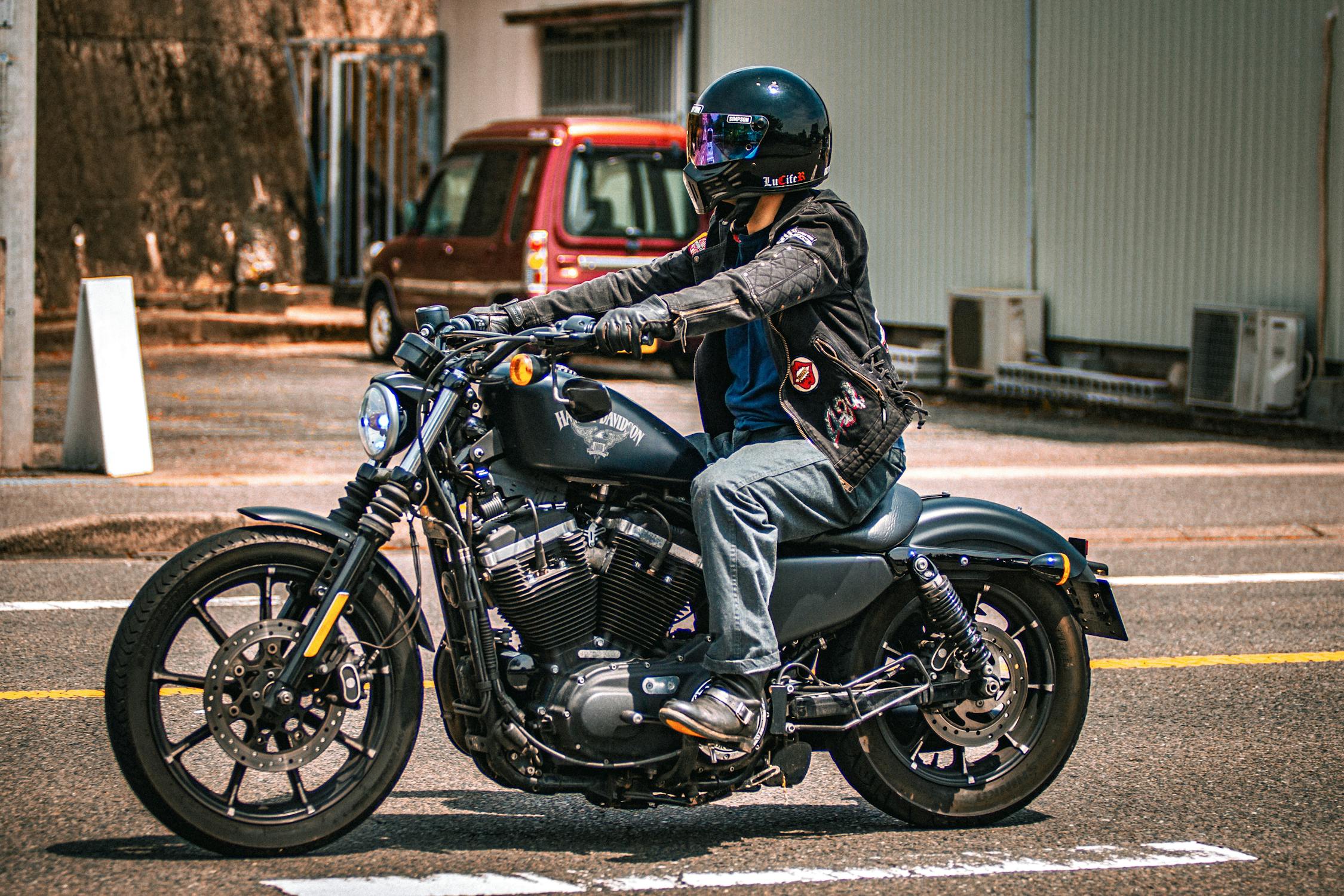The Ultimate First Party Bike Insurance Price Bargain Guide

| In this article we will read about : |
|---|
| Introduction |
| What is 1st party two wheeler insurance? |
| What is 1st, 2nd, and 3rd party insurance? |
| How much is bike insurance for a 125cc? |
| Which company gives cheapest bike insurance? |
| How to know first party insurance? |
| What is 3rd party bike insurance? |
| Can I use 3rd party insurance? |
| What is a first party? |
| Why use third party insurance? |
| Is 125cc good for a bike? |
| Are 125cc bikes safer? |
| How long do 125cc bikes last? |
| How to insure a new bike? |
| What kind of bike insurance is best? |
| What is a 2 safe? |
| What is own damage insurance? |
| Conclusion |
| Frequently Asked Questions and Its Answers |
Introduction
First-party bike insurance, also known as comprehensive insurance, is a vital investment for bike owners who want to safeguard their financial well-being and protect their valuable assets. This type of insurance provides coverage for damages to your bike, regardless of fault, and offers peace of mind while riding.(first party bike insurance price)
What is 1st Party Two Wheeler Insurance?
First-party two-wheeler insurance (commonly referred to as own damage coverage) offers coverage specifically for damages to your own two-wheeler.
It protects it against risks like accidents, theft, fire and natural calamities; unlike third-party policies which primarily protect others’ properties and injuries; first-party covers are designed specifically to safeguard investments made into motorbikes themselves and can give peace of mind that any unexpected losses to them are protected financially – providing peace of mind knowing your vehicle has protection against an array of possible dangers!
What is 1st, 2nd, and 3rd party insurance?
First-party coverage refers to coverage provided against damages, theft or loss to one’s own properties – like their vehicle in auto insurance policies. First-party policies offer protection against damages to their own assets such as damages to vehicles as well as theft.
Second-party insurance involves an insurer providing coverage directly to a first party – typically, their policyholder – while also guaranteeing compliance with terms outlined within it.
In essence, they become accountable for fulfilling terms set in their policies themselves.
Third-party liability coverage provides protection from liabilities stemming from damage or injuries caused by an insured party to another individual or their property. While such policies don’t address their losses directly, third-party insurance provides essential protection for anyone else affected by their actions.(first party bike insurance price)
How much is bike insurance for a 125cc?
Insurance premiums for 125cc motorcycles typically depend on factors like rider age, driving record and location; specific bike model; level of coverage desired and desired level.
On average though, due to lower risk and lesser performance characteristics than larger engine sizes; insurance premiums tend to be lower due to having smaller engines; yet actual prices vary greatly based on individual circumstances and insurer.
To receive accurate quotes it’s advisable that contact insurance providers directly so you receive personalized assessments with tailored assessments for an accurate quote.
Which company gives cheapest bike insurance?
Finding an insurance provider offering cheap bike coverage can be difficult and can depend on a range of variables such as rider age, location, driving history and the specific bike being insured.
Insurance rates also can differ significantly among providers and may change over time, making comparison of quotes necessary in order to find affordable bike policies – Progressive, GEICO State Farm Allstate are well known providers offering competitive rates – however their cheapest policy option might differ significantly for each person so research and compare quotes tailored specifically for individual circumstances for best results.(first party bike insurance price)
How to know first party insurance?
To identify whether you possess first-party insurance, review your policy documents or call your insurer directly. Specifically look for any coverage details which protect against damages to your own vehicle due to damages, theft, fire or any other perils – such as “own damage insurance” and comprehensive coverage; your card or policy declaration page should detail this type of protection – if unsure, reach out for clarification directly from them!
Keep in mind first-party is distinct from third-party coverage which covers damages done to others’ properties or injuries sustained as a result of you actions taken against others due to you taking.
What is 3rd party bike insurance?
Third-party bike insurance provides coverage against liabilities caused by damages or injuries caused by an insured party to another individual or their property, insuring you financially in case you’re held accountable for harming someone while riding your bike. Often mandated as legal requirements in various places to operate motorcycles legally.
Covered expenses include costs related to repairs/replacement for third-party property as well as medical bills from injuries incurred attributable to riding. Unfortunately it doesn’t extend coverage against damage done directly to their own motorcycle though!(first party bike insurance price)
Can I use 3rd party insurance?
Yes, third-party insurance can legally allow you to ride a motorcycle in most places – in fact it is often required by various jurisdictions.
Third-party coverage provides liability protection arising from damage you cause while riding your bike to others or their property – this way if someone claims that it was your responsibility, their expenses for repair or medical treatment would be covered under your policy – it should also be noted however that third-party coverage doesn’t extend to damages to your own motorcycle!(first party bike insurance price)
What is a first party?
In insurance terms, “first party” refers to any person or organization holding an insurance policy from an insurance provider; that person/entity purchases coverage directly and is entitled to claim benefits or compensation in case of losses or damages covered under their policy; for instance if you buy one to protect your car you would be the “first party,” with both insurers being considered third parties in that contract.
Why use third party insurance?
Third-party liability coverage protects you against financial responsibility incurred as the result of negligently caused accidents if someone else sustains injuries as a result. Third-party insurance serves several important functions; here are just a few reasons to have it:
1. Legal Requirement: Third-party liability coverage may be legally mandated to operate your vehicle on public roads in many locations.
2. Financial Protection: Protect yourself against potentially significant costs related to repairing or replacing someone else’s property or covering their medical costs should an accident result from you – all costs which could add up quickly if they arise as a direct result of what happened due to negligent behavior on your part.
3. Peace of Mind: Knowing you have coverage can bring peace of mind, enabling you to concentrate on driving safely without worry over financial ramifications from an accident.
4. Responsibility: Demonstrating responsibility and consideration for other road users requires making sure you can fulfill any financial responsibilities should an accident cause harm or damage to someone.
Third-party insurance policies provide essential protection from financial hardship caused by vehicular accidents on the road, offering both individuals and other drivers peace of mind when an incident arises.(first party bike insurance price)
Is 125cc good for a bike?
An individual’s satisfaction with a 125cc bike depends on individual preferences, needs and circumstances; here are some factors to keep in mind when shopping:
1. Commuting: With fuel efficiency and maneuverability as their hallmark characteristics, 125cc bikes make ideal commuter vehicles in urban areas with heavy traffic congestion.
2. Maneuverability: Electric scooters’ smaller size and lighter weight make them easier for novice riders or those maneuvering tight spaces to maneuver, providing greater maneuverability for tight spots or those just learning the ropes.
3. Affordability: 125cc motorcycles tend to offer lower purchase and insurance costs than larger displacement motorcycles, making them more accessible for budget-minded riders.
4. Performance: Though less powerful, 125cc motorcycles still provide adequate power and performance for city driving and shorter trips.
Ultimately, whether a 125cc bike is right for you depends on your individual riding needs, preferences, and experience level.
Are 125cc bikes safer?
Safety on the road depends on many variables beyond engine size alone, including rider behavior and road conditions; and following safety procedures. There may be aspects of 125cc bikes which contribute to that safety:
1. Maneuverability: Due to being lighter and agiler in design, 125cc bikes tend to be easier for novice riders to maneuver and control in urban settings with heavy traffic density.
2. Lower Speeds: These bikes typically offer lower top speeds compared to larger motorcycles, providing riders with additional time and distance from hazards before an accident happens.
3. Accessibility: Smaller engine sizes may appeal to novice riders or those lacking experience, giving them time to gain confidence before progressing onto larger, more powerful bikes.
However, it’s crucial to recognize that safety ultimately rests with the rider themselves; skill, experience and compliance with safe riding practices determine this regardless of engine displacement size.
Proper training, wearing protective gear and riding defensively all play key roles in maintaining motorcycle safety no matter its displacement size.(first party bike insurance price)
How long do 125cc bikes last?
The lifespan of a 125cc bike depends on a variety of factors, such as maintenance, usage, build quality and environmental conditions.
With proper care and regular maintenance tasks like oil changes, chain adjustments and regular inspections performed regularly by professional mechanics can extend its life and ensure optimal performance of its components for many years of riding pleasure – not forgetting factors like riding habits, storage conditions or exposure to harsh weather that might reduce its life significantly compared to that of poorly cared-for machines! Overall though, properly cared-for bikes will provide reliable transportation over many years or miles!
How to insure a new bike?
Follow these steps in order to protect a new bike:
1. Research Providers: Compare insurance providers until you find one with coverage tailored specifically for your needs and budget, especially one who specializes in motorcycle insurance with excellent customer service credentials.
2. Gather Information: Before reaching out to insurers, gather details on your new bike such as its make, model and year as well as VIN (Vehicle Identification Number), purchase price and any modifications or accessories installed or modifications done since.
3. Get Quotes for Motorcycle insurance: Speak to various providers about motorcycle coverage and request quotes for insurance policies that match up. Be prepared with information on both your bike and yourself for this process to work effectively.
4. Decide On Coverage: After choosing your bike model and accessories, determine what kind and level of insurance coverage are necessary to meet your needs for it – options typically include liability, collision, comprehensive, uninsured/underinsured motorist and medical payments coverages.
5. Consider Additional Coverage Options: Depending on your specific needs, additional insurance such as roadside assistance, accessory coverage or rental reimbursement might be of use to you.
6. Review Policy Documents: Review all terms and conditions of every insurance policy carefully, such as its coverage limits, deductibles, exclusions and any optional add-ons.
7. Purchase Policy: Once you’ve selected an insurance provider and policy that fits your needs, complete the application process and purchase an insurance plan for your bike.
8. Submit Payment: Pay your insurance policy premium either one time, or in installments as determined by the insurer’s payment options.
9. Secure Proof of Insurance: Once your policy has been purchased, your insurer should give you evidence of insurance in the form of either an insurance card or electronic document that should always remain readily accessible when riding your bicycle. Keep this proof handy while riding.
10. Register Your Bike: In most jurisdictions, registration requires proof of insurance as part of its process to make sure your bike abides with legal compliance and proper registration is achieved. Follow all necessary procedures during registration so your ride remains legal compliant and fully registered with authorities.
By following these steps, you can efficiently insure your new bike and protect against accidents, theft or any unforeseen incidents that might arise from its ownership.
What kind of bike insurance is best?
Your ideal bike insurance depends entirely on your specific needs, preferences and circumstances. Here are some popular forms of bike coverage and their respective advantages:
1. Liability Insurance: Liability insurance provides coverage for injuries you cause others in an accident, typically required by law and used to help safeguard financial assets in case you’re found responsible of one.
2. Comprehensive Insurance: Comprehensive insurance provides protection for damages to your bike caused by circumstances other than collision, such as theft, vandalism, fire or natural disasters – offering peace of mind and safeguarding your investment.
3. Collision Insurance: Collision coverage pays the costs associated with repairing or replacing your bike after it’s involved in an accident with another vehicle or object, especially if your bike is relatively expensive to fix or replace. Invest in collision coverage if your newer or more costly model requires costly repair or replacement measures.
4. Uninsured/Underinsured Motorist Coverage: Protect yourself in case of an accident with an individual that neither possesses insurance, nor provides sufficient coverage, to pay your losses or injuries.
5. Medical Payments Coverage: Medical payments coverage provides cover for you and any passengers injured in a motorcycle accident regardless of who was at fault, helping cover medical bills, ambulance fees, and any associated costs that arise as a result.
6. Personal Injury Protection (PIP): PIP provides broad protection for medical expenses, lost wages and other damages sustained from motorcycle accidents that happen regardless of fault. Available in some states and offering more extensive protection than medical payments coverage.
Your ideal bike insurance solution depends on factors like budget, value of bike and risk tolerance as well as any specific coverage needs you have. When considering available policies it’s essential that you thoroughly investigate each one until identifying one which provides both adequate protection while remaining cost effective for you individually. Compare quotes across insurers before selecting coverage which best meets these criteria for optimal protection with affordable premiums suited specifically to you and your circumstances.
What is a 2 safe?
Unfortunately, “2 Safe” is an ambiguous term in both bike insurance and insurance terminology in general, possibly reflecting typographic error or specific use in context that’s less well known. For clarity in understanding its usage or any additional details please reach out so I can better help.Visit
What is own damage insurance?
Own damage insurance (comprehensive insurance), commonly referred to as comprehensive cover, offers coverage against damages caused by accidents, theft, vandalism, fires and natural disasters as well as third-party insurance liability policies.
With own damage coverage you can claim compensation in case your bike becomes damaged or stolen and receive repairs or replacement for repairs needed immediately; providing financial peace-of-mind that all potential risks related to owning and driving it have been financially covered against.Visit
Conclusion
Selecting the proper bike insurance requires taking careful account of your individual needs, preferences, and circumstances. Comprehensive or liability policies provide coverage against damages to your own vehicle while researching providers can help to educate yourself about all available types and their respective benefits – with research providers, quotes comparison, policy term reviews providing invaluable assistance when it comes to making informed decisions that offer adequate protection and peace of mind for riders on the road. With adequate protection in place you can enjoy riding without fearing unexpected events on the road!
Frequently Asked Questions and Its Answers
Q: What is first-party bike insurance?
Answer:First-party bike insurance is a type of comprehensive insurance that provides financial coverage for damages to your own bike, regardless of fault.
Q: What are the benefits of first-party bike insurance?
Answer:First-party bike insurance offers coverage for own damage, theft, accidents, and natural calamities, providing financial support and peace of mind.
Q: Is first-party bike insurance mandatory?
Answer:No, first-party bike insurance is not mandatory, but it is highly recommended to ensure complete protection for your bike.
Q: What are the exclusions in first-party bike insurance?
Answer:First-party bike insurance excludes damages due to wear and tear, mechanical breakdowns, driving under the influence, and racing or illegal activities.
Q: How do I apply for first-party bike insurance?
Answer:You can apply for first-party bike insurance online or offline through an insurance provider or broker.
Q: What is the cost of first-party bike insurance?
Answer:The cost of first-party bike insurance varies depending on the bike’s value, age, and location, starting at ₹1.3/day.
Q: What is the difference between first-party and third-party bike insurance?
Answer:First-party bike insurance covers damages to your own bike, while third-party bike insurance covers liabilities to other people or property.
Q: Can I customize my first-party bike insurance policy?
Answer:Yes, you can customize your first-party bike insurance policy with add-on covers like zero depreciation, roadside assistance, and key replacement.




